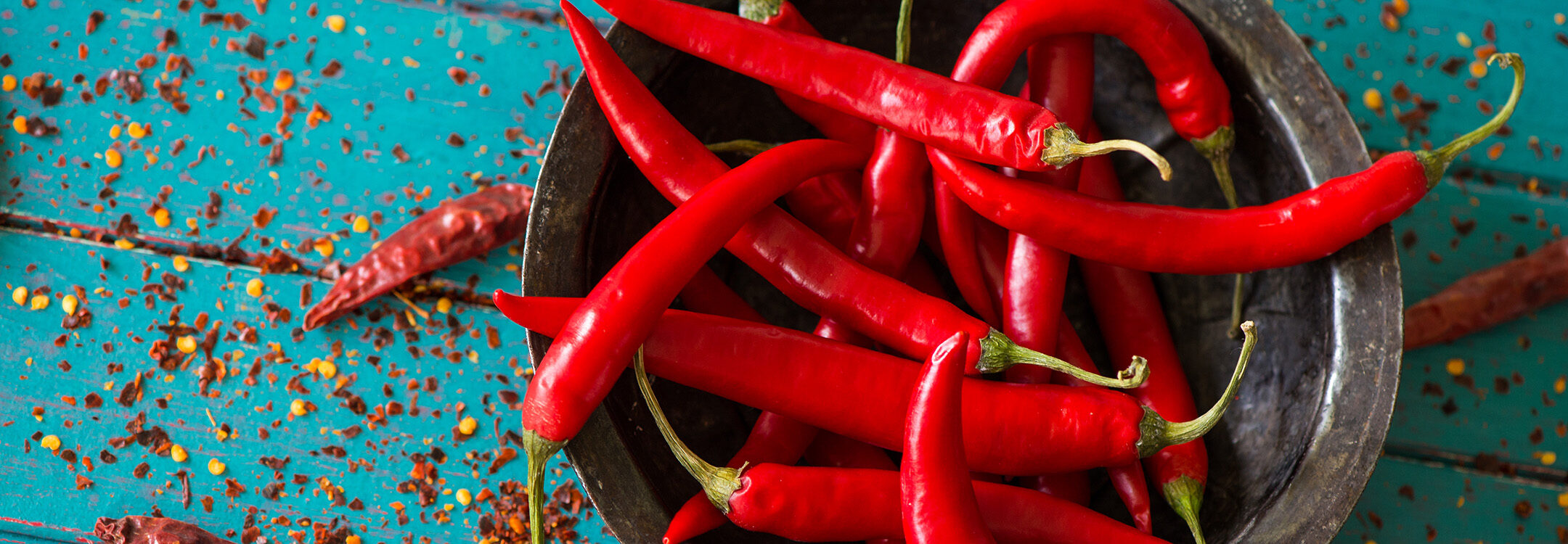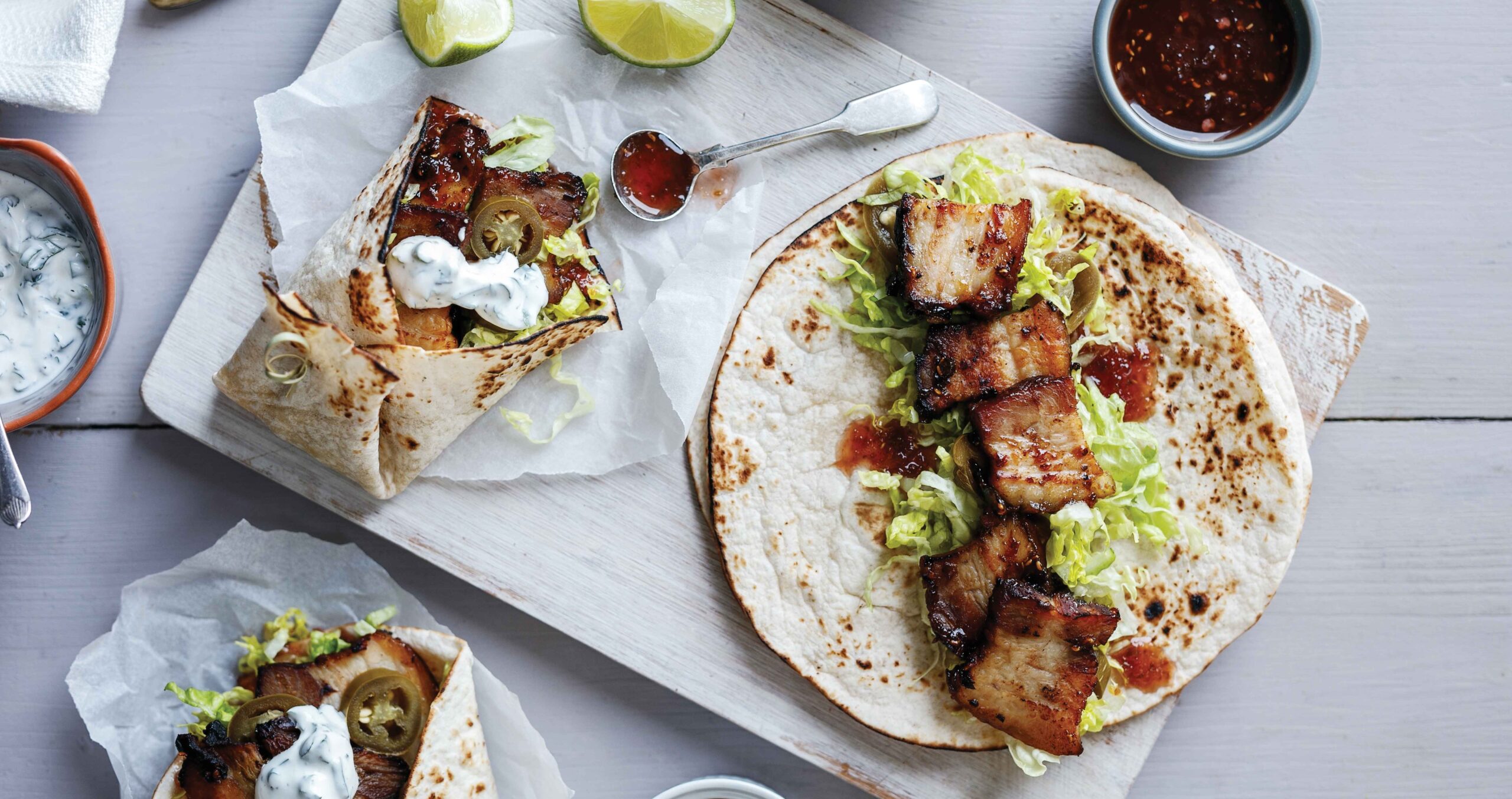In this installment of her Eat Ireland column, Deputy Editor Jocelyn Doyle invites you to find your inner chilli addict…
These days, it’s hard to believe that I used to be a true chilli wimp. For most of my formative years, my mother and sister would chomp happily through curries while I sat sweating helplessly over my dinner bowl. I assumed that spicy foods just weren’t for me, that it was my destiny for hot dishes of any kind to cause me discomfort and ruin my eye makeup.
Then, in my early twenties, I spent some time backpacking around south-east Asia with my friends. A game was started to determine which of us could withstand the hottest Thai food; as it turned out, the prospect of winning this (pointless, prizeless) challenge was all my competitive nature needed. The rivalry culminated in my ordering a squid curry so hot that it made me cry. I don’t mean to say that my eyes were watering, as is common when eating spicy foods — I mean that I was experiencing a level of physical pain bad enough to make me weep. And yet, in the grandly foolish, win-at-all-costs tradition of my father’s side of the family, I held on stubbornly, finished my plate, stopped blubbering and claimed my victory.
As it turns out, being a spice wuss is by no means a life sentence. The sensation of heat in your mouth is a physical response to capsaicin, a compound found in chillies. Its purpose is to deter mammals like ourselves from eating chillies from their plants. (Interestingly, birds are unaffected by capsaicin because they are capable of spreading the seeds far and wide, an advantage for the plant.) The burn occurs when capsaicin bonds with the pain receptors on the inside of the mouth, tricking them into responding as though experiencing a literal burn.
Not only is it very possible to raise your tolerance level by repeated exposure to capsaicin, but — as I soon found — the sensation quickly becomes addictive. One explanation for this is our unique pursuit of “safe” dangerous activities, such as rollercoasters or bungee jumps: situations in which we may feel a rush of adrenaline without putting ourselves at any real risk. Quite the opposite, in fact: studies suggest a myriad of benefits associated with spicy food, and it has been linked with improving heart health, reducing inflammation and lowering levels of bad cholesterol and blood pressure, in addition to boosting the production of feel-good hormones such as serotonin. Eating very spicy foods can even lead to feelings of euphoria.
Our little island is not exactly known for spicy foods but, as Irish palates become more adventurous, things are changing. Cork is at the forefront of this with Rebel Chilli, a range of hot sauces; as owner Paul Moore explains, the name is a reference to the “rebel county,” but also to the seemingly ironic concept of basing a chilli sauce company in Ireland. “No-one else was making really good chilli sauce,” he says, “so I started making it in my mother’s kitchen and selling it at farmers’ markets, where I realised that there is a market for it.”
Indeed, Rebel Chilli has gone from strength to strength, and Paul’s biggest test in the last 12 months has been keeping up with the demand, both at home and as far away as Dubai. His insistence on using fresh, whole ingredients is a separate challenge in itself, and high-quality chillies are imported from Spain and the Netherlands in order to circumvent the obvious problems with growing them in our rainy climate.
Aside from the novelty of an Irish-owned hot sauce company, there’s plenty else for which to commend Rebel Chilli. Products like these often focus on the heat alone, to the detriment of the overall taste profile; not so here, however, where there are real, complex layers of flavour behind the burn. There are no additives or preservatives used, and the fact that the whole range is gluten-free and vegan-friendly means that everyone can enjoy a little rebellion.
As Paul explains, the sauces are incredibly versatile; while they are delicious as dips and marinades, he uses them most often in cooking. I’ve taken his word for it and used the Jalapeño and Raspberry Jelly to create one of the tastiest pork belly recipes I’ve had the pleasure to ingest: easy enough for a family meal, yet fancy enough for a dinner party, I guarantee you won’t be disappointed.
Paul’s favourite is the Habanero Relish, because “it is fantastic to add to curries or soups, or to use as a marinade for meat.” I find it impossible to choose my favourite, as every time I try one of the sauces I fall in love all over again.
Even if you’re far from a chilli aficionado, my personal transition from apprentice to addict proves that it’s perfectly possible to develop a taste for it, even without shedding tears in Phuket. One of the many the great things about this fantastic range is that it includes every heat level from sweet and mild to rip-roaringly hot, meaning that you can work your way up from reluctance to true rebellion. The chilli challenge is on.
Visit www.rebelchilli.com for more information, and follow this link for insanely tasty crispy pork belly tacos.
- gut health
- healthy
- top tips
- fridge cake
- food festival
- me auld flower
- dublin
- dublin festival
- food and drink festival
- festival line-up
- Summer festival
- Events
- Festivals Ireland
- Body & Soul
- music festival
- summer events
- OATLY
- Crudo
- All Together Now
- Events Waterford
- Events Ireland
- news
- events Dublin
- Home-Cooking
- online cooking course
- cooking







You have to be signed in to comment this post.